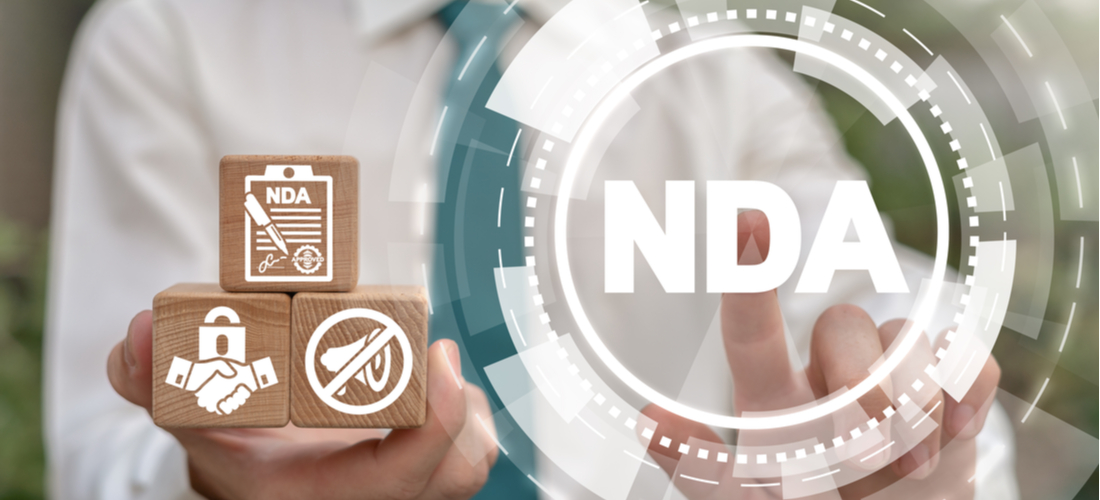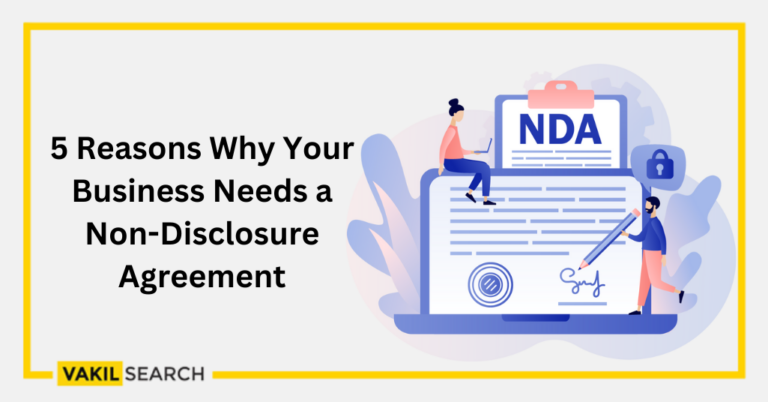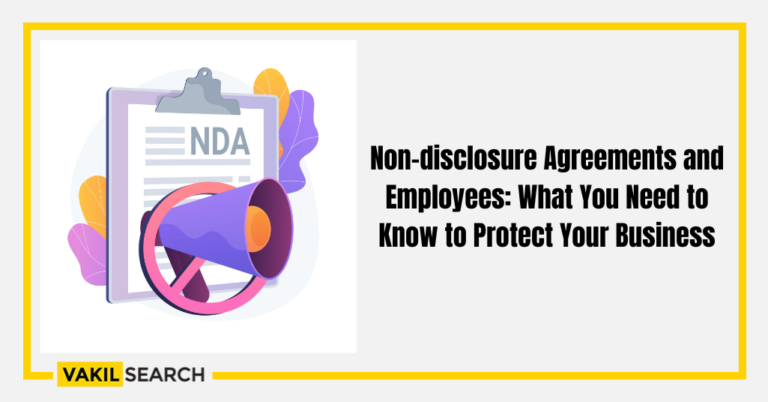In this blog, you will learn about NDAS, their essential components, types, and when they are required.
A Non-disclosure Agreements legally binding is an arrangement in which both parties agree to trade-sensitive information and agree not to disclose such data to third parties outside of the agreement’s parameters. This agreement form is also referred to as a secrecy agreement.
A non-disclosure agreement commits a person to confidentiality by a legally binding document that needs a signature, as opposed to paying someone to swear to silence.
The Most Essential NDA Components Are:
A non-disclosure agreement (NDA) must be reasonable and explicit regarding what material is considered secret and what is not. A contract can be declared void if its terms are overly broad, irrational, or burdensome. Courts may also dispute or invalidate agreements that are too broad or oppressive, or that purport to cover information that is not confidential. Once the content in question has been brought to the notice of the broader public, the NDA can no longer be enforced.
The non-disclosure agreement must provide a detailed explanation of what comprises “Confidential Information” in the situation of the trade between the parties. In most instances, the party that is providing the information may have a broader definition, provided that this party normally obtains greater benefits from this relationship. Alternatively, the party receiving the information may have a more precise definition for the same term.
Equally important is the inclusion of a term that clarifies what does not constitute sensitive information. There is the prospect of several transactions, for which it is unreasonable to anticipate that particular information will be kept confidential. Furthermore, information that is already available to the public cannot be labelled Confidential Information.
Conditions Governing Confidentiality
It is of the greatest significance that almost any Non-Disclosure Agreements legally binding properly identifies and outlines the duration of its validity. The length of the non-disclosure contract can be determined at the parties’ discretion, taking into account the particulars of the transaction covered by the pact. That could be for one year, ten years, or an indefinite period of time.
Disclosure
Additionally, the Non-Disclosure Agreements legally binding must define with whom the parties may communicate the confidential information. It is likely that the other party will be obliged to disclose certain sensitive information (including such financial data) to its related representatives, partners, or entities in order to complete its thorough research or conduct a nature study. Therefore, the ‘disclosure’ element must be defined in a very clear manner.
Exceptions to the General Rule of Confidentiality
Under certain unavoidable conditions, the party may be compelled to reveal the sensitive information to a third party.
These examples may include: This could occur if the administrative authority or other government bodies request the confidential material in question, or if the party in question is forced to disclose the information in question during a legal proceeding. In such a situation, the individual who reveals the confidential information will not be held liable for violating the Non-Disclosure Agreements legally binding.
Consequently, any essential exceptions to the Non-Disclosure Agreements legally binding must be specified in the aforementioned contract. Gather all the necessary Information about Master Service Contract Online in India.
The Method for Returning the Confidential Information
The method in which sensitive information must be handled is typically decided by the nature of the disclosed material. Include a provision that states how the recipient must either return the document or destroy the totality of the sensitive information obtained by the recipient.
This condition must also stipulate a deadline for the document’s return. This is significant because after the Non-Disclosure Agreement expires, the recipient will no longer have access to the information that was disclosed with them in compliance with the NDA. The NDA Processing cab be made Easily with Our Expert Panel.
Remedies
When releasing confidential information, the disclosing party places themselves in a more vulnerable position. Therefore, the available remedies for the offended party must be defined in the agreement so that they may be pursued in the case of a violation of the terms of the contract or breach of the agreement.
Interaction with Employee Staff
After the transaction has been established, the other party often interacts with the workers of the relevant authority, which may provide such party with an edge in their efforts to recruit the disclosing party’s personnel.
They may be able to persuade such employees to leave their positions at other companies and join them. In order to safeguard the organization from the chance of loss of such potential employees, the employee solicitation clause in the non-disclosure agreements legally binding must contain a provision prohibiting the parties from promoting or luring the employees.
Types of NDA
-
Unilateral NDAs
Unilateral non-disclosure agreements also referred to as one-way non-disclosure agreements stipulate that only one party must disclose its sensitive information to the other.
They are the most common type of non-disclosure agreement, and you will encounter them whenever organisations need to disclose confidential information to the employees, advisors, customers, partners, or other interested parties.
Parties such as management and staff, firms and contractors, patents and examiners, and sellers and purchasers can enter into NDAs.
-
Bilateral NDAs
In a non-disclosure agreement (NDA), both parties are protected against the inappropriate use of any confidential information disclosed to the other party. Each party to this NDA is obligated to maintain absolute confidentiality with regard to the private information collected about the other party.
-
Multilateral NDAs
At least three parties are participating in a multilateral non-disclosure agreement (also known as a multi-party NDA), and at least one of them will share information with the other parties. In addition, the party or parties will request that the other parties maintain this information private and prevent its further disclosure.
When Should An NDA Be Signed?
There are numerous scenarios and occurrences that necessitate the execution of a non-disclosure agreement. A minor proportion of them seem to be as follows:
- into a commercial contract,
- while seeking the counsel of industry experts about a brand-new product,
- when beginning a brand-new endeavour,
- while also exploring the possibility of investing with another party.
- During the signing of a contract employee for a delicate job, there was a delay.
- while dealing with confidential client information,
- while discussing potentially commercially sensitive information with some other party, etc.
To maintain its security in compliance with the conditions of the Non-Disclosure Agreement, which are intended to prevent unauthorised use of sensitive information.
When is an NDA required?
At some point, it will be necessary to communicate sensitive information with individuals or organisations located outside of your organisation. This may be required to attract investors, hire new employees, or seek out new partnerships or collaborators. NDAs are required for businesses to continue these operations in a secure manner.
When exactly is a non-disclosure agreement required? The five situations below illustrate why a confidentiality clause is very required.
-
Products:
When your organisation engages in the selling or licensing of a product line, you must ensure that none of the disclosed information, whether financial, technical, or otherwise, can be shared with a third party. This covers any information regarding the product or technology’s specifications.
Because they have access to confidential and proprietary information, you are responsible for ensuring that your workers do not disclose critical information about your organisation, either while they are still employed by the company or after they have departed.
-
Partners:
When talking with a new partner or investor, you must take care to protect any information exposed during these conversations.
During the process of enrolling a new client, your company may obtain access to personal information pertaining to that client’s organisation. A non-disclosure agreement (NDA) can safeguard your business by specifying which bits of information must stay confidential to prevent unintended legal exposure.
-
Firm:
When selling a firm, its finances and operations must be revealed not just to the organisation which will acquire it, but also to any intermediaries and brokers participating in the transaction. A nondisclosure agreement ensures the privacy of information.
When sharing information with potential investors, engaging with vendors, and investigating prospects for joint ventures, secrecy disclosure agreements are frequently utilised.
Are NDAs legally binding?
There is no way around the reality that confidentiality agreements are legally enforceable. The fact that a non-disclosure agreement is legally enforceable drives its establishment and subsequent execution.
For example, firms such as Coca-Cola and KFC have been able to protect their exclusive information for almost a century. What is the key to their success?
A non-disclosure agreement, commonly known as an NDA, is the solution. Using a non-disclosure agreement (NDA), these organisations ensure that their employees are legally bound to keep the recipe and other trade secrets confidential.
When you manage a business, you will surely encounter a number of situations in which you are required to reveal confidential messages to a particular other businessperson or a complete other business organisation. You can use a Non-Disclosure Agreement (NDA) to offer others permission to keep their information confidential without revealing its contents.
This agreement is beneficial in a variety of settings. It is a very customizable document that aids a company in safeguarding sensitive information. Information may range from corporate plans to the release of new products. This aids a company in retaining the confidentiality of its data.
When two or more parties decide to collaborate formally on a project, it is normal practise for them to sign a non-disclosure agreement. This includes commercial contacts, employment and investment prospects, among other things.
Before investing money in a company, investors usually sign a non-disclosure agreement (NDA) to protect the confidentiality of both parties’ Online Business Ideas.
Generally, non-disclosure agreements are used to maintain the confidentiality of plans. This information includes information about the clientele, manufacturing operations, and much more. It is a major legal construct used to protect the privacy of information. This document is vital for protecting the security of enterprises and startups.
In addition, having both parties consent to a non-disclosure agreement can foster trust between them, which can facilitate the negotiation process. This suggests that the likelihood that property ownership will be stolen will diminish.
Conclusion
In order to draft a strong, legally binding non-disclosure agreement (NDA), both parties must specify the information that must be kept confidential in all of the terms and conditions.
Confidential information can include documents, drawings, sketches, analyses, source codes, marketing plans, production processes, and technical procedures in Non-disclosure Agreements Legally Binding.
Read more:-










